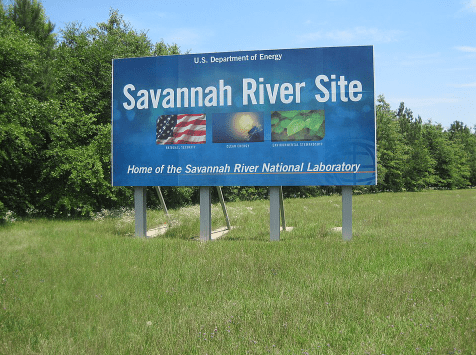A bizarre and alarming discovery has been made at a former nuclear weapons site in the United States – a radioactive wasp nest, uncovered during a routine inspection.
A recent report from the US Department of Energy (DoE) has confirmed that a wasp nest contaminated with radioactive material was found earlier this month at the Savannah River Site in South Carolina.
The facility, which was once a key location in America’s Cold War nuclear weapons programme, now handles nuclear waste storage and cleanup operations.
Unusual Contamination Discovered Near Waste Tanks
The discovery was made on 3 July during standard radiological monitoring near tanks used to hold liquid nuclear waste. The DoE’s report, dated 22 July, revealed that the nest was contaminated with radiation levels “greater than 10 times the total contamination values” permitted under federal regulations.
Upon discovery, the wasp nest was sprayed and subsequently treated as radiological waste. Officials confirmed that it originated from “onsite legacy radioactive contamination” and clarified that it was “not related to a loss of contamination control”.
No Environmental Spread Detected
Crucially, radiation surveys confirmed there was no contamination detected on the ground or in the surrounding area. As a result, no further action was deemed necessary.
Savannah River Mission Completion, the contractor responsible for site management, told local media outlet Aiken Standard that the discovery occurred during routine monitoring by their radiological control team. The contaminated nest was promptly sprayed and tested for radiation.
“While no wasps were found on the nest, the individual insects would have significantly lower levels of contamination. Upon discovery of the contaminated nest, the immediate area was secured and surveyed; no contamination was found in the area. There were no impacts to workers, the environment or the public,” the company stated.
In a chilling reminder of the unpredictable nature of radioactive sites, a wasp nest – laced with dangerous levels of radiation – was discovered in close proximity to one of America’s largest nuclear waste storage facilities. The incident has raised eyebrows, despite assurances that no broader contamination was detected.
Not everyone is convinced the matter ends there. Tom Clements, executive director of the Savannah River Site Watch, voiced frustration over the lack of clarity.
“I was as mad as a hornet that SRS didn’t explain where the radioactive waste came from or if there is some kind of leak from the waste tanks that the public should be aware of,” he told the Associated Press.
His concerns centre around the possibility of leaks or undisclosed sources of radiation within the facility.
The Savannah River Site has a deep-rooted nuclear history. Constructed in the early 1950s, the site was initially tasked with producing plutonium and tritium for nuclear weapons. That mission ended with the Cold War. Since 1992, the facility has shifted focus towards environmental remediation, nuclear materials handling, and research.
The F-Area Tank Farm, where the contaminated nest was located, houses 22 underground carbon steel tanks. Each tank can store between 750,000 and 1.3 million gallons (approximately 2.8 to 5 million litres) of radioactive waste.
According to site officials, wasps typically don’t travel far – usually only a few hundred yards – suggesting the insects likely picked up contamination within the immediate vicinity.
While this incident may seem like a one-off anomaly, it underscores the challenges of managing decades-old radioactive waste sites. Despite routine checks and strict safety measures, the threat of legacy contamination continues to buzz in the background.






